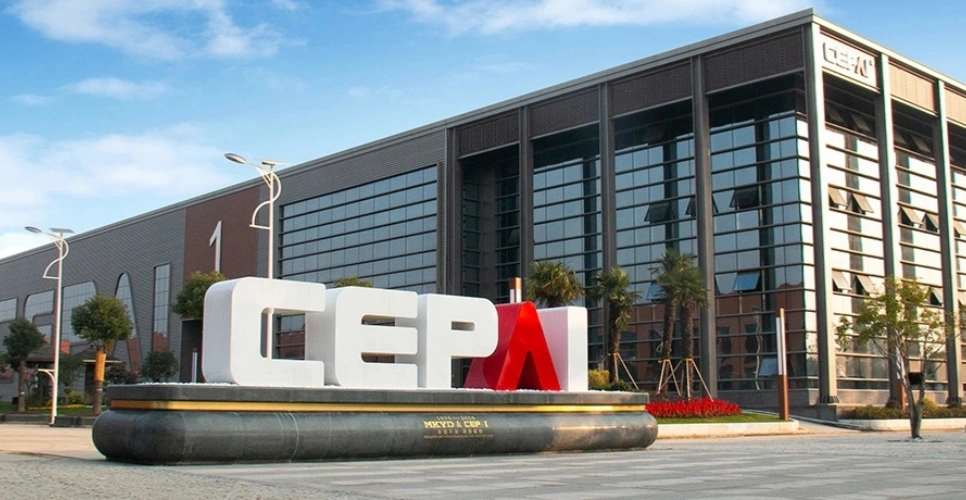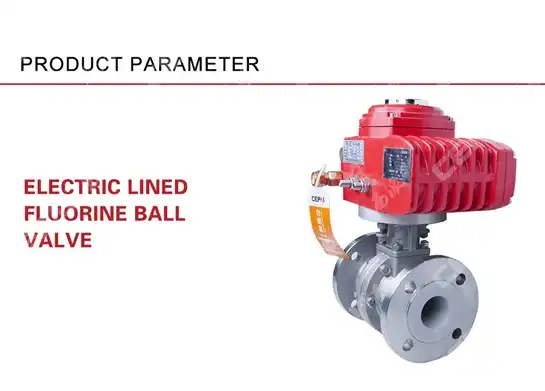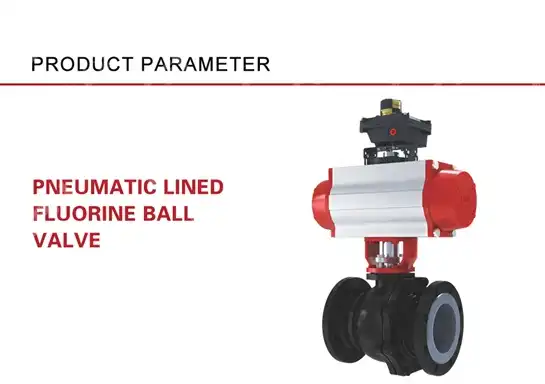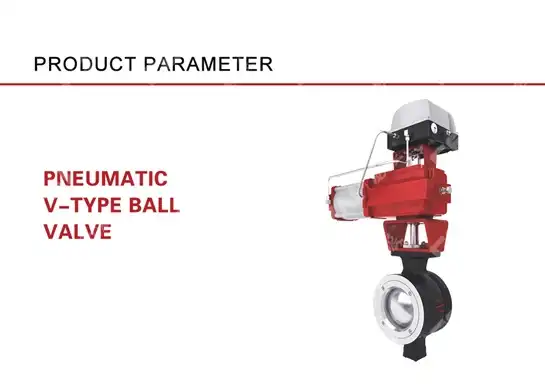How Do Ball Valves Achieve Such High-Pressure Resistance?
When critical industrial operations face catastrophic pressure failures, the consequences extend far beyond equipment damage. Production shutdowns, safety hazards, and massive financial losses plague facilities worldwide when High-Pressure Ball Valve systems fail to meet demanding operational requirements. Understanding how ball valves achieve exceptional pressure resistance becomes crucial for engineers selecting components that must withstand pressures exceeding 1000 PSI while maintaining reliable sealing performance under extreme conditions.
Advanced Material Engineering in High-Pressure Ball Valve Design
-
Superior Body Construction for Maximum Pressure Resistance
The foundation of any High-Pressure Ball Valve lies in its robust body construction, which must withstand tremendous internal forces while maintaining structural integrity. Modern high-pressure applications demand body materials that exceed conventional limitations, with advanced stainless steel alloys like WCB, CF8, and CF8M providing exceptional strength-to-weight ratios. These materials undergo specialized heat treatment processes that enhance their molecular structure, creating crystalline formations capable of distributing stress evenly across the valve body when subjected to extreme pressures. The engineering behind High-Pressure Ball Valve bodies involves sophisticated wall thickness calculations based on pressure vessel theory, where engineers must account for stress concentration factors at connection points and transitions. Advanced manufacturing techniques such as investment casting and precision machining ensure uniform material density throughout the valve body, eliminating weak points that could compromise pressure resistance. Modern facilities like CEPAI Group implement intelligent manufacturing processes with 156 million yuan investments in high-precision production lines, ensuring consistent quality in every High-Pressure Ball Valve manufactured.
-
Revolutionary Ball and Stem Material Technology
The ball mechanism represents the heart of pressure resistance in High-Pressure Ball Valve applications, requiring materials that maintain dimensional stability under extreme conditions. Premium grades of stainless steel including 304, 316, 304L, and 316L undergo specialized surface treatments that create microscopic surface structures resistant to pressure-induced deformation. These materials exhibit exceptional yield strength characteristics, maintaining their spherical geometry even when subjected to pressures exceeding 7,500 PSI. Advanced ball manufacturing processes incorporate precision grinding and polishing techniques that achieve surface finishes measured in microinches, eliminating surface irregularities that could compromise sealing effectiveness. The stem connection utilizes specialized metallurgy that creates molecular bonds between dissimilar metals, ensuring the drivetrain maintains integrity throughout the valve's operational life. High-Pressure Ball Valve manufacturers like CEPAI Group implement strict material traceability systems, ensuring every component meets or exceeds API specifications for critical pressure applications.
Innovative Sealing Technologies for Extreme Pressure Applications
-
Multi-Layer Sealing Systems and O-Ring Technology

Revolutionary sealing technology distinguishes superior High-Pressure Ball Valve designs from conventional alternatives, with multi-layer sealing systems providing redundant protection against pressure-induced leakage. Advanced O-ring configurations utilize materials like polytetrafluoroethylene (PTFE), reinforced with secondary backup rings that prevent extrusion under high-pressure conditions. These sealing systems incorporate spring-energized designs that maintain consistent contact pressure regardless of thermal expansion or mechanical wear. The geometry of sealing surfaces requires precise mathematical calculations to ensure optimal contact stress distribution, with engineers utilizing finite element analysis to optimize seal groove dimensions and contact angles. Modern High-Pressure Ball Valve designs incorporate dual sealing zones that provide primary and secondary containment, ensuring leak-tight performance even if one sealing element experiences degradation. Advanced materials like RPTFE, PEEK, and PPL offer enhanced chemical resistance while maintaining flexibility under extreme pressure differentials.
-
Dynamic Pressure Compensation Mechanisms
Sophisticated pressure compensation systems enable High-Pressure Ball Valve designs to maintain sealing effectiveness across wide pressure ranges, with floating ball mechanisms that utilize upstream pressure to enhance sealing force. These systems incorporate carefully calibrated spring assemblies that provide consistent preload while allowing the ball to float against downstream seats under pressure influence. The result creates a self-energizing sealing system that becomes more effective as pressure increases. Advanced computational fluid dynamics modeling enables engineers to optimize internal flow paths that minimize pressure drop while maximizing sealing effectiveness, with specialized inlet nozzle designs protecting critical sealing surfaces from erosive flow patterns. High-Pressure Ball Valve manufacturers implement precise assembly torque specifications that ensure optimal seal compression without inducing excessive stress concentrations that could compromise long-term reliability.
Precision Manufacturing and Quality Control Systems
-
Intelligent Manufacturing Processes for Consistent Quality
Modern High-Pressure Ball Valve production demands manufacturing precision that exceeds traditional industrial standards, with advanced CNC machining centers capable of maintaining tolerances measured in thousandths of inches across complex three-dimensional surfaces. Intelligent manufacturing systems integrate real-time quality monitoring with automated feedback control, ensuring every component meets stringent dimensional requirements before assembly. These systems utilize laser measurement technology and coordinate measuring machines that verify geometric accuracy at every production stage. The integration of artificial intelligence and machine learning algorithms enables predictive quality control that identifies potential defects before they impact production quality, with statistical process control systems monitoring hundreds of variables simultaneously. Manufacturing facilities like CEPAI Group's Asia Pacific region production line incorporate advanced robotics and automated handling systems that eliminate human error while maintaining consistent assembly torque specifications crucial for High-Pressure Ball Valve reliability.
-
Advanced Testing and Validation Protocols

Comprehensive testing protocols ensure every High-Pressure Ball Valve meets or exceeds performance specifications before shipment, with hydrostatic testing procedures that subject valves to pressures significantly exceeding their rated working pressure. These tests utilize specialized equipment capable of generating pressures up to 15,000 PSI while monitoring for microscopic leakage that could indicate potential failure modes. Advanced leak detection systems utilize helium mass spectrometry and bubble testing to verify seal integrity at the molecular level. Quality management systems implement ISO 9001 standards with additional requirements specific to high-pressure applications, including material traceability documentation that tracks every component from raw material procurement through final assembly. CNAS nationally recognized laboratories conduct independent verification testing that validates manufacturer claims, providing objective performance data that customers can rely upon for critical applications.
Application-Specific Design Optimization
-
Industry-Specific Pressure Requirements and Solutions
Different industrial applications present unique challenges that require specialized High-Pressure Ball Valve configurations, with oil and gas operations demanding valves capable of handling pressures exceeding 10,000 PSI while maintaining leak-tight shutoff in the presence of abrasive fluids. Petrochemical applications require specialized materials that resist chemical attack while maintaining mechanical properties under extreme pressure and temperature conditions. Power generation facilities utilize High-Pressure Ball Valve designs optimized for steam service applications where pressure and temperature fluctuations create additional stress cycles. The evolution of High-Pressure Ball Valve technology continues addressing emerging applications in renewable energy systems, where hydrogen service requires specialized sealing materials and surface treatments that prevent hydrogen embrittlement while maintaining pressure resistance. Advanced computational modeling enables engineers to optimize valve designs for specific operating conditions, ensuring optimal performance while minimizing material costs and maintenance requirements.
-
Future Innovations in High-Pressure Valve Technology
Emerging technologies promise revolutionary advances in High-Pressure Ball Valve design, with additive manufacturing enabling complex internal geometries impossible to achieve with traditional machining methods. These innovations include integrated sensors that monitor valve position, pressure, and temperature in real-time, providing predictive maintenance data that prevents unexpected failures. Advanced materials research continues developing new alloys and composite materials that offer superior performance characteristics while reducing overall system weight. The integration of digital twin technology enables virtual testing and optimization of High-Pressure Ball Valve designs before physical prototyping, reducing development time while improving performance characteristics. Smart valve technologies incorporate wireless communication capabilities that integrate with plant-wide automation systems, providing unprecedented visibility into valve performance and condition monitoring.
Conclusion
High-Pressure Ball Valve technology represents a sophisticated integration of advanced materials, precision manufacturing, and innovative sealing systems that enable reliable operation under extreme pressure conditions. The combination of superior body construction, revolutionary sealing technologies, and intelligent manufacturing processes ensures these critical components meet demanding industrial requirements while providing long-term reliability and safety.
Cooperate with CEPAI Group Co., LTD.
As a national high-tech enterprise and specialized "little giant" company, CEPAI Group Co., LTD. stands at the forefront of High-Pressure Ball Valve innovation and manufacturing excellence. Since our establishment in 2009, we have invested 156 million yuan in intelligent manufacturing transformation, creating the longest high-precision production line in the Asia Pacific region. Our comprehensive certifications including API Q1, API 6A, API 6D, and ISO 9001 demonstrate our commitment to quality and reliability in every High-Pressure Ball Valve we manufacture.
Whether you're seeking a reliable China High-Pressure Ball Valve factory, trusted China High-Pressure Ball Valve supplier, or experienced China High-Pressure Ball Valve manufacturer for your critical applications, CEPAI Group delivers exceptional value through our extensive product portfolio. As a leading China High-Pressure Ball Valve wholesale provider, we offer competitive High-Pressure Ball Valve prices without compromising quality. Our High Quality High-Pressure Ball Valve solutions serve major clients including PetroChina, Sinopec, and CNOOC, with each High-Pressure Ball Valve for sale backed by comprehensive technical support and after-sales service. Contact our expert team today at cepai@cepai.com for personalized High-Pressure Ball Valve solutions that meet your specific requirements.
FAQ
Q: What pressure range can high-pressure ball valves typically handle?
A: High-pressure ball valves typically handle pressures higher than 3,000 psi (210 bar), with maximum working pressures reaching 7,500 psi (520 bar) for standard designs and up to 15,000 psi (1,000 bar) for specialized applications.
Q: What materials are commonly used for high-pressure ball valve construction?
A: High-pressure ball valves utilize carbon steel, stainless steel, and carbon alloys for body construction, with material selection based on pressure, temperature, and chemical compatibility requirements.
Q: How do sealing systems work in high-pressure ball valves?
A: Ball valves incorporate various seals, rings, and gaskets made from materials like PTFE, rubber, or graphite to prevent leakage, with stem packing minimizing fugitive emissions and ensuring reliable valve operation.
Q: What makes ball valve sealing more effective under high pressure?
A: When the valve is closed, inlet pressure forces the ball against the outlet seat, creating increased contact stress on the sealing belt that provides more reliable sealing as pressure increases.
References
1. "Ball Valve Design and Application Guidelines" by John Smith, American Society of Mechanical Engineers, Valve Technology Handbook Series
2. "High-Pressure Industrial Valve Systems" by Maria Rodriguez, International Valve Manufacturing Institute, Advanced Materials and Design Principles
3. "Sealing Technology for Critical Applications" by David Chen, Society of Tribologists and Lubrication Engineers, Industrial Sealing Solutions
4. "Materials Science in Valve Manufacturing" by Sarah Johnson, American Institute of Chemical Engineers, Process Equipment Design Standards
_1746598557316.webp)
Get professional pre-sales technical consultation and valve selection services, customized solution services.

About CEPAI


